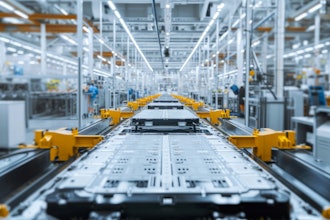
Robotic Process Automation Accounting...
IT’S NOT WHAT YOU THINK
by Richard Harris,
Content Director for
Works Applications America, Inc.
Robotic Process Automation & Accounting2
WHAT IS ROBOTIC
PROCESS AUTOMATION
AS MOST OF US
UNDERSTAND IT TODAY?
It’s a software-based robot worker, just as
you had imagined. But the thing to know here
is the idea of how these robots are trained at
their tasks. Instead of a programmer coming
in to code each step of their day using code-
based instructions, these robots can be trained
using demonstrative steps. We can simply
show the robot what the task is, then it learns
and mimics the work, much like training a
human worker.
But the promise of a perfect robot worker is
not quite achievable…yet.
There is a missing piece to the puzzle to get
the system to function properly. We cannot
simply hand off our mundane, repetitive
tasks to a computer and expect it to perform
flawlessly with 100% accuracy, instantly saving
you time and your company money.
Sure, we can train the system on tasks, and
this is a must. But what happens when you get
an exception in the work flow. For instance,
let’s think about invoicing. What happens
when you get an invoice from a new vendor,
or your current vendor decides to change their
invoice format? Well, this is an exception that
your robot worker cannot deal with, because it
cannot think. It can only complete a given task.
Let’s look at this invoicing example in a
bit more detail. Nowadays, there are systems
We all have a preconceived
notion of what Robotic Process
Automation (RPA) is, much like
I did. My goal with this case
study will be to help you dispel
some of those misconceptions
and introduce you to some
potential benefits of an
automated work flow.
Robotic Process Automation & Accounting3
that use Optical Character Recognition (OCR)
technology. Think of it as a smart scanner. The
scanner can look at a paper invoice and extract
the information from the scan. It then takes the
important information such as vendor name,
address, cost, date, etc. and parses that into a
database. That’s great when you see the same
exact invoice from the same exact vendor. All
of the invoice information is in the same place.
It’s the same process that a human worker
would do for manual data entry. You take an
invoice, type the information into fields in
your ERP software then store that information
in your database. And, remember, we are
also training our robot coworker at the same
time so it can take on the typing task that we
no longer have time for. So, the robot worker
now knows how to deal with that same
invoice from that same vendor where all of
the information is in the same place time after
time. It’s accurate here.
And we can let the robot worker run on its
own, right? Sure, we can if we know that it
will see the same exact information time and
again. But this is the real world. We have many
vendors sending us many different invoices in
different formats. There is no standardization.
Now there’s a problem. Familiar invoices
only make up about 30% of what a company
receives from its vendors.
Your new, and expensive, RPA system needs
help. It needs to be re-trained on how to deal
with this instance of a new invoice format. So,
you go back, get a human worker to sit down
with the system and go through a step by step
process to re-train the system to know how
to deal with this iteration. This sounds a bit
ineffective. Well just how ineffective is this?
So, let’s look at how this affects your work
flow. You have a system that is roughly 30%
accurate due to your RPA investment, but this
system needs constant manual intervention to fix
problems along the way. Your automated system,
especially if you have other systems relying upon
them to perform their tasks, puts your whole
AP operation on hold each time you need to
re-train the robots on a new exception. That’s
not exactly efficient. But why does this happen?
What is going on under the hood?
Automated systems today using current OCR
technology are still dependent upon what’s
called static data matching. For example, your
system is looking for data in the same place on
invoices. Then it sends that data to the same
place on the server that it has been taught
to. It is inflexible. So, how do we address this
problem? With Artificial Intelligence, and more
specifically, machine learning.
I’m sure you are familiar with the idea of
Artificial Intelligence. This is a system that
not only learns tasks, but it is now capable of
making suggestions. Remember the work flow
where we had the robot observing a user’s
tasks? Well now the robot is doing more. It is
doing its data entry tasks, pulling information
from invoices, but it is also dealing with the
pesky exceptions as well. Here is how.
THE KEY IS REPETITION.
Let’s say we load thousands of invoices
into a system, then let it make up its own
mind about what an invoice is based on an
RPA is not intelligent.
It can observe and repeat
but systems can’t deal
with new information
without AI.
Robotic Process Automation & Accounting4
algorithm, what features it has, and what
information should be where. Now we have a
system of machine learning. Now we can ask it
to look at a new invoice, and from its previous
experiences it can figure out what information
is what. And, to take it a step further, if the
system is still stumped, it will then interact
with a human, presenting a suggestion. It can
narrow things down on its own, so we simply
teach it a particular instance of a new invoice,
and it will know for next time. Done. No re-
training necessary.
So, the system that we looked at without AI,
remember that was using a static data matching
methodology? An AI powered system, uses a
dynamic data matching method. Over time,
as the system sees more and more invoices,
the accuracy rate increases. This is due to the
system’s ability to learn and suggest.
Now let’s look at a few examples of
how particular entities can benefit from AI
technology. The pharmaceutical industry has
begun using Shared Service Centers (SSC)
where invoices from multiple subsidiaries can
be funneled to one location for processing.
They see tens of thousands of invoices a month
from hundreds of different vendors across
several locations.
As I’m sure you can imagine, there will
be daily instances of exceptions on multiple
invoices, requiring human intervention to
re-train the system. This slows down the
operation and, if growth is experienced, will
require an expansion of the labor force. With
an AI enabled system, exceptions and growth
are not things that will hamper work flow. And
they shouldn’t be.
Here is another example. The US federal
government, specifically the Office of
Management and Budget is mandating
that vendors shift to a digital e-invoicing
methodology by 2018. This affects more than
80 agencies who are already struggling with
tight budgets and a restricted workforce. Add
to that a drastic increase in the number of
contractor invoices flowing in, and you have a
real problem on the horizon.
These agencies need a new way to deal with
this growth and increase in invoices, while
being able to maintain their current workforce
and payment targets. They need a platform
that utilizes AI and machine learning to reduce
worker’s tasks and their systems reliance on
re-training.
RPA is not intelligent. It can observe and
repeat, but systems can’t deal with new
information without AI. The automation comes
from machine learning technology. Once
implemented and trained, an RPA system with
AI is incredibly accurate, approaching 100%
with minimal human interaction.
The future is close at hand
with technology from
companies like Works
Applications America, Inc.
and products such as
AI Works.
FOR MORE INFORMATION:
[email protected]
worksap.com/us
424.266.9430






















